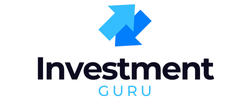The best time to refinance mortgage depends on interest rate trends, your credit profile, and personal financial goals. With shifting economic conditions and evolving lending practices, knowing exactly when to refinance can save you thousands in interest and help you tap into equity strategically.
Table of Contents
Why Timing Matters in Refinancing
Mortgage refinancing is not just about securing a lower rate—it’s about optimizing the lifetime value of your home loan. Refinancing too early can result in high closing costs that outweigh savings. Refinancing too late can mean missed opportunities when rates are at their lowest.
According to Investopedia, refinancing is the process of revising and replacing the terms of an existing credit agreement. The timing determines whether your refinance adds profits or pitfalls to your financial journey.
Economic Outlook for 2025
The U.S. Federal Reserve policy decisions significantly impact mortgage refinance opportunities. For 2025, projections from Federal Reserve data suggest gradual rate stabilization after recent market turbulence in 2023–2024.
- Interest rates: Analysts predict modest rate cuts or stabilization in early 2025.
- Housing market: Prices may cool slightly, offering refinancing options for equity growth.
- Inflation: Lower inflation reduces mortgage rates, creating prime refinancing events.
Signs It’s the Best Time for You to Refinance
1. Interest Rates Drop Below Your Current Rate
A common benchmark states that refinancing is worthwhile when the new rate is at least 0.5% to 1% lower than your current mortgage rate. Even fractions can mean tens of thousands in savings.
2. Your Credit Score Has Improved
Lenders offer the best refinancing rates to borrowers with high credit scores (generally above 740). If your score improved since your original mortgage, refinancing can lock in lower rates.
3. You Want to Shorten Loan Terms
Moving from a 30-year to a 15-year mortgage cuts interest significantly while building equity faster. Refinancing enables this shift if your budget allows higher payments.
4. You Plan on Staying in Your Home Long Enough
Always calculate your break-even point, which is the time needed for refinancing savings to outweigh closing costs. If you plan to sell before that, wait.
Break-Even Point Explained
The break-even point is where your cumulative savings from lower payments exceed closing costs. For example:
| Loan Balance | Rate Before Refinance | Rate After Refinance | Monthly Savings | Closing Costs | Break-Even |
|---|---|---|---|---|---|
| $300,000 | 6.5% | 5.75% | $210 | $3,500 | 16.6 months |
Best Months to Refinance Mortgage in 2025
Seasonal and economic cycles influence the mortgage industry:
- Q1 (January–March): Historically, lenders offer competitive rates to boost business early.
- Spring (April–June): This aligns with the housing market surge. Rates may fluctuate more.
- Late Year (October–December): Lenders closing annual targets often provide attractive promotions.
Tools & Apps to Help Time Your Refinance
Managing mortgage refinancing is easier with the right apps. Here’s how to set them up, compare costs, and maximize usefulness:
1. Bankrate Mortgage Calculator
Setup: Available free via web. Enter loan balance, term, and new interest rate. No downloads required.
Cost: Free. No paid add-ons.
Use Case: Helps calculate break-even points instantly.
2. Mint (Budget Tracking)
Setup: Download from App Store/Google Play → Connect accounts securely → Categorize spending.
Cost: Free, with in-app upgrades for ad removal and premium insights (~$4.99/month).
Use Case: Determine if your budget can handle higher payments after refinancing to a shorter term.
3. NerdWallet Refinance Tool
Setup: Create a NerdWallet account → Input loan and income details → Access personalized refinancing offers.
Cost: Free with optional financial tracking features.
Use Case: Side-by-side lender comparisons before applying.
4. Zillow Refinance Calculator
Setup: Web-based tool, no sign-in required. Input current mortgage details to compare scenarios.
Cost: Free.
Use Case: Visual charts make refinancing savings easier to understand.

Fixed vs. Adjustable Rate Refinancing
Choosing between fixed and adjustable refinancing depends on your risk tolerance:
| Type | Pros | Cons | Best For |
|---|---|---|---|
| Fixed Rate | Stable payments, predictable budgeting | Initially higher rates than ARMs | Long-term homeowners seeking stability |
| Adjustable Rate (ARM) | Lower initial payments, flexible short-term costs | Uncertainty when rates adjust upwards | Short-term residents or investors |
Refinancing for Equity Cash-Out
A cash-out refinance allows you to replace your mortgage with a larger one to tap into home equity, often for renovations or debt consolidation. However, with rates expected to moderate in 2025, consider whether the cash-out justifies higher loan balances.
“Refinancing can unlock wealth, but only if debt is managed meticulously. Use home equity strategically and not just as free cash.”
Refinance Closing Costs in 2025
Expect costs to remain around 2%–6% of your loan balance. Always request Loan Estimates upfront from multiple lenders and compare.
Step-by-Step Guide to Refinancing in 2025
- Check Credit: Use free annual credit reports and pay down balances before applying.
- Shop Around: Request quotes from 3–5 lenders.
- Calculate Break-Even Point: Use calculators to ensure savings exceed costs.
- Submit Application: Upload pay stubs, W-2s, and tax returns digitally.
- Close Efficiently: Review Closing Disclosure carefully before signing.

Common Pitfalls to Avoid
- Failing to compare multiple lenders.
- Overlooking closing costs in calculations.
- Incorrectly timing refinancing during volatile rate changes.
- Using cash-out refinancing for non-essential expenses.
10 Frequently Asked Questions
1. What is the best time to refinance mortgage 2025?
Early in 2025 when interest rates are expected to stabilize after prior volatility.
2. How much can I save with a refinance?
On average, homeowners save around $150–$300 monthly depending on rate differences and loan balances.
3. How long does refinancing take?
Expect 30–45 days, depending on lender workload and appraisals.
4. Is refinancing worth it with only 0.5% rate reduction?
Yes, especially if you have a large loan balance or plan on staying long-term in your home.
5. Will refinancing hurt my credit?
It triggers a hard inquiry, but long-term lower debt payments can improve your score.
6. Should I pay points to lower my refinance interest rate?
Paying points works best if you plan to stay in the home long enough to cover upfront costs.
7. Can I refinance with poor credit?
Yes, but rates will be higher. Consider improving your credit first to qualify for savings.
8. Are refinance closing costs tax-deductible?
Generally, only the interest portion is deductible. According to the IRS, most closing costs are not deductible.
9. How often can I refinance?
Technically unlimited, but lenders may set minimum waiting periods (often 6 months).
10. Can I refinance into another FHA, VA, or USDA loan?
Yes, streamlined refinance programs exist for government-backed loans with lower documentation requirements.
Conclusion
Determining the best time to refinance mortgage 2025 is a balance of economic trends, individual financial goals, and careful preparation. With rates likely stabilizing, early-to-mid 2025 offers prime opportunities. Use calculators, apps, and expert resources to track rates and lock in savings. Start planning today so you don’t miss the window where refinancing provides real long-term value.


